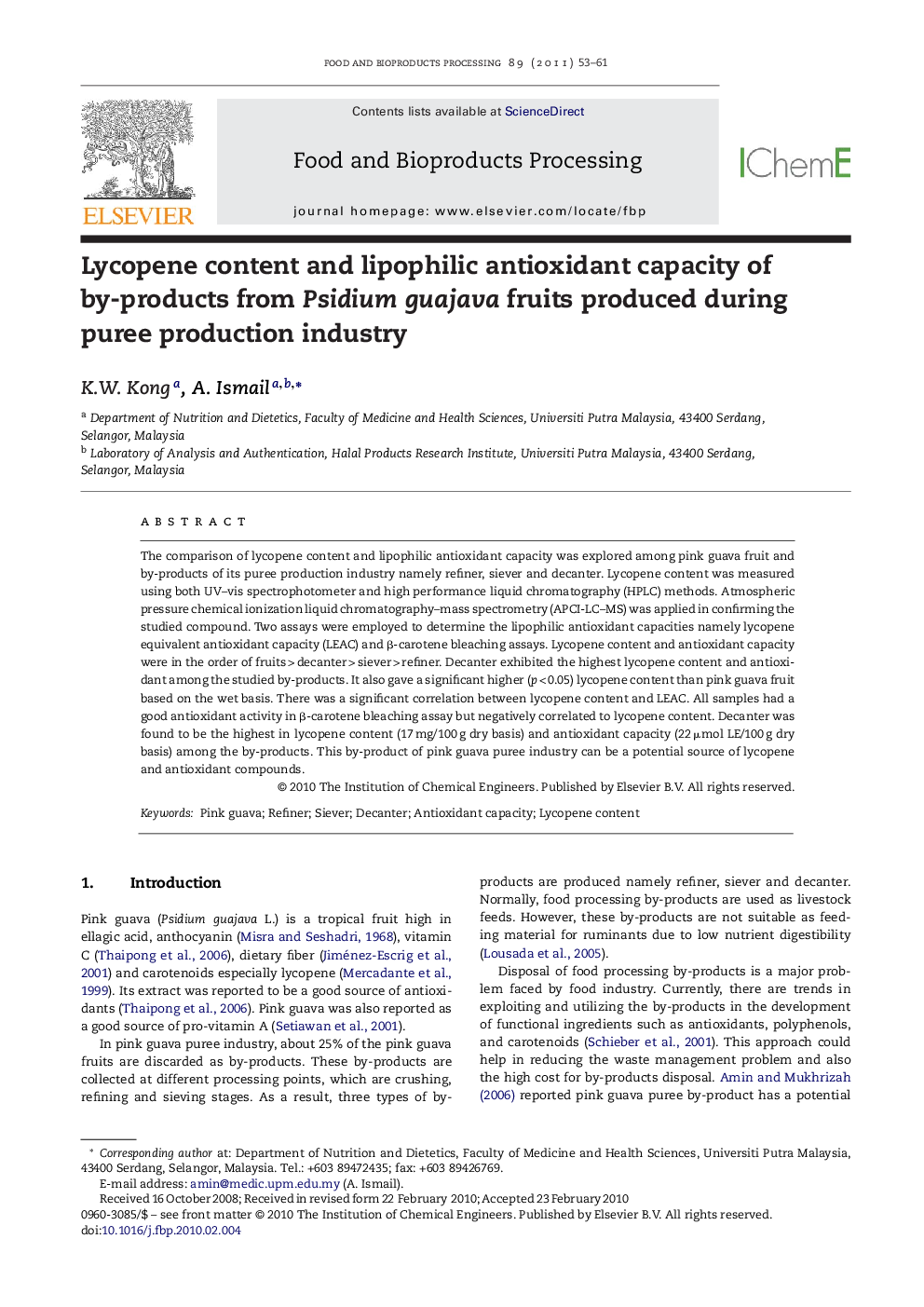| Article ID | Journal | Published Year | Pages | File Type |
|---|---|---|---|---|
| 19233 | Food and Bioproducts Processing | 2011 | 9 Pages |
The comparison of lycopene content and lipophilic antioxidant capacity was explored among pink guava fruit and by-products of its puree production industry namely refiner, siever and decanter. Lycopene content was measured using both UV–vis spectrophotometer and high performance liquid chromatography (HPLC) methods. Atmospheric pressure chemical ionization liquid chromatography–mass spectrometry (APCI-LC–MS) was applied in confirming the studied compound. Two assays were employed to determine the lipophilic antioxidant capacities namely lycopene equivalent antioxidant capacity (LEAC) and β-carotene bleaching assays. Lycopene content and antioxidant capacity were in the order of fruits > decanter > siever > refiner. Decanter exhibited the highest lycopene content and antioxidant among the studied by-products. It also gave a significant higher (p < 0.05) lycopene content than pink guava fruit based on the wet basis. There was a significant correlation between lycopene content and LEAC. All samples had a good antioxidant activity in β-carotene bleaching assay but negatively correlated to lycopene content. Decanter was found to be the highest in lycopene content (17 mg/100 g dry basis) and antioxidant capacity (22 μmol LE/100 g dry basis) among the by-products. This by-product of pink guava puree industry can be a potential source of lycopene and antioxidant compounds.
